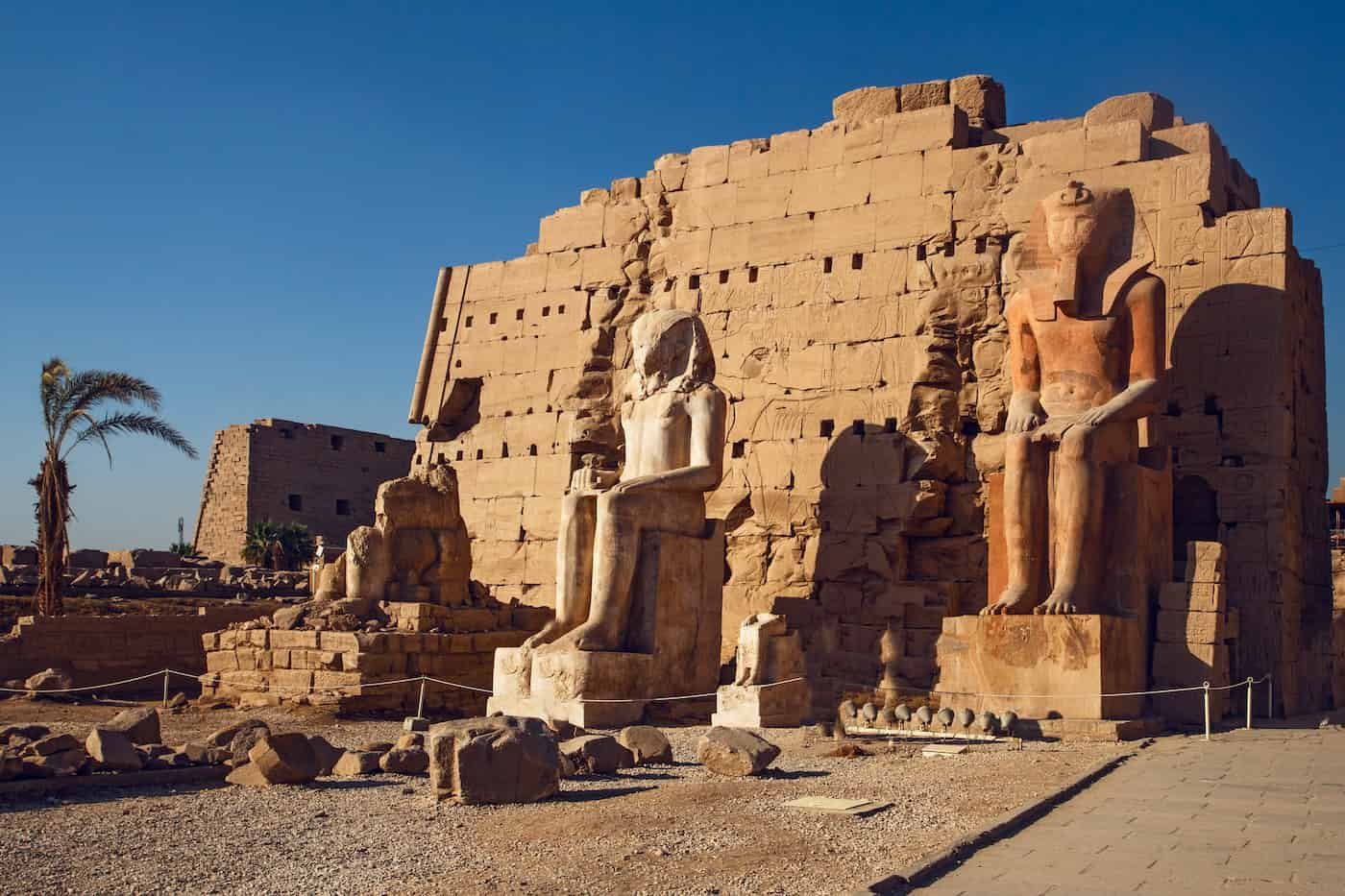Thebes, Egypt: The Major City in Upper Egypt
Thebes was an ancient Egyptian city along the Nile, 800 kilometers (500 miles) south of the Mediterranean. Its ruins lie in the modern Egyptian city of Luxor. Thebes was the main city of the fourth Upper Egyptian nome (Sceptre nome) and was the capital of Egypt for long periods during the Middle Kingdom and New Kingdom eras.
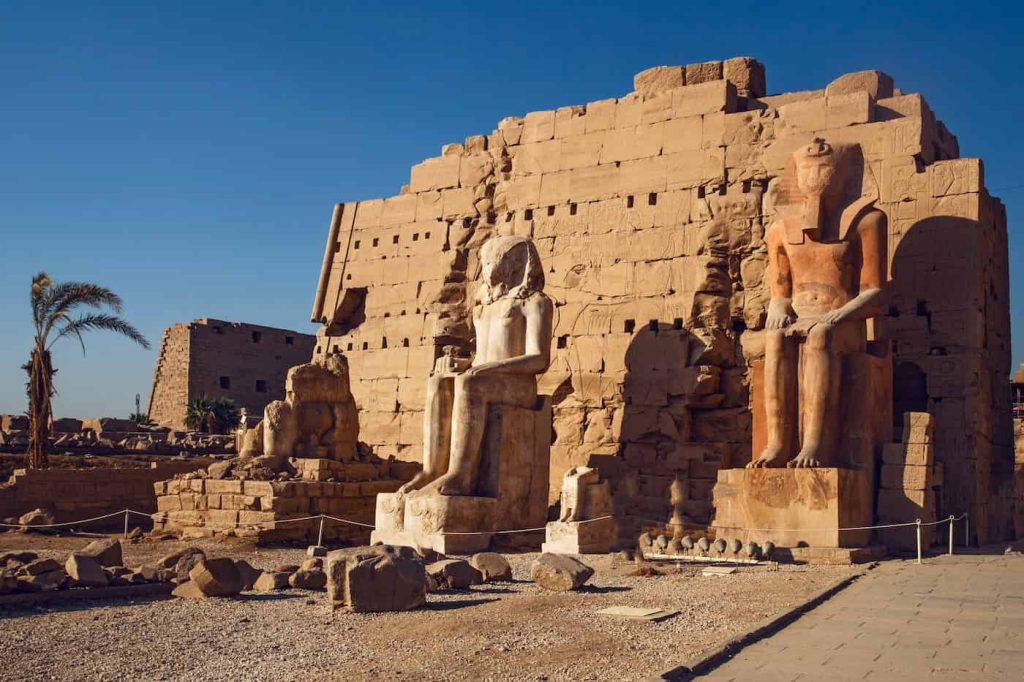
Thebes, Egypt
It was near Nubia and the Eastern Desert, with its valuable mineral resources and trade routes. It was a religious center in ancient Egyptian history. As there are the temples of Karnak and Luxor, a necropolis of large private and royal tombs, and funerary tombs. Moreover, UNESCO described the ruins of ancient Thebes as a World Heritage Site.
The Name Of Thebes, Egypt
Thebes also had a sacred name “P-Amen” or “Pa-Amen,” which meant “House of Amen.”. It was also known to the ancient Egyptians as “Wase” or “Wo’se,” meaning “City,” and “Usast” or “Waset,” meaning “Southern City.”
The Egyptian name for Thebes was Waset, which means “the sceptre of the pharaohs”, a long staff with an animal’s head and a forked base. Thebes was known in Egyptian as njwt-jmn, the “City of Amun”, which was the chief of the Theban Triad of deities, whose other members were Mut and Khonsu at the end of the New Kingdom.
Characteristics Of Ancient Thebes
Thebes had a religious, political, and economic importance in Egypt. As it affects the culture and the economy of Egypt. Moreover, the number of the population has changed its position in Egypt compared with the city of Memphis. Let’s know some information about these Characteristics:
1- The Geography Of Thebes
Thebes was along the Nile River in the middle of Upper Egypt, about 800 km south of the Delta. Egyptians built it on the alluvial plains of the Nile Valley, which follows a great bend of the Nile. So the city was in a northeast–southwest axis parallel to the contemporary river channel.
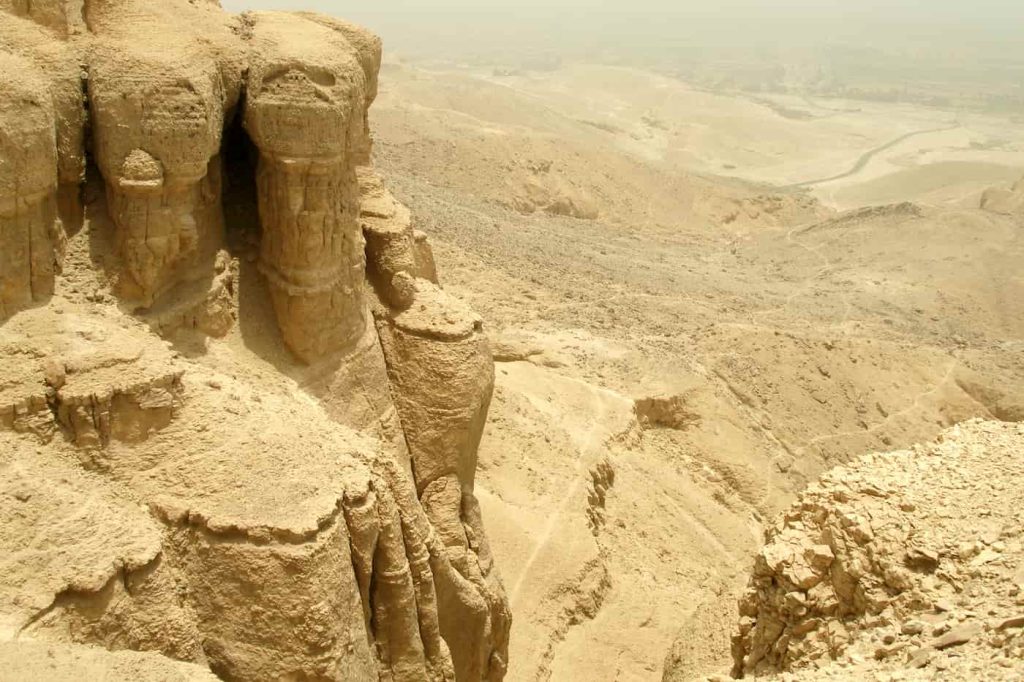
Thebes had 93 km2 (36 sq mi). It included parts of the Theban Hills in the west that were 420 meters (1,380 feet) high. In the east, there is the mountainous Eastern Desert with its wadis draining into the valley. Wadi Hammamat near Thebes is important among these wadis.
Thebes was an overland trade route going to the Red Sea coast. Wadi Hammamat was the primary trade route that linked Egypt to the Red Sea since Pre-Dynastic times. There is also the Wadi el-Hol near Thebes; this valley connected Thebes to an oasis in the Western Desert.
Nearby towns in the fourth Upper Egyptian nome were Per-Hathor, Madu, Djerty, Iuny, Sumenu, and Imiotru.
2- Population of Thebes
According to George Modelski, Thebes had about 40,000 inhabitants in 2000 BC (compared to 60,000 in Memphis, the largest city in the world at this time). By 1800 BC, the population of Memphis was down to about 30,000, making Thebes the largest city in Egypt at the time.

The city of Ancient Memphis
Historian Ian Morris has estimated that by 1500 BC, Thebes may have grown to be the largest city in the world, with a population of about 75,000.
Shomarka Keita reported that a 2005 study on mummified remains found that “some Theban nobles had a histology which indicated notably dark skin”.
3- The Economy of Ancient Thebes
The archaeological remains of Thebes refer to the Egyptian civilization. The Greek poet Homer expressed the wealth of Thebes in the Iliad, Book 9 (c. 8th Century BC): “.. in Egyptian Thebes the heaps of precious ingots gleam, the hundred-gated Thebes”.
🏛 Discover Our Top Tours To Thebes
Enjoy amazing Trips and Visits to the Land of Thebes in Luxor
4- The Culture Of Thebes, Egypt
People celebrated more than sixty annual festivals in Thebes. The major festivals among these were: the Beautiful Feast of Opet, the Khoiak (Festival), the Festival of I Shemu, and the Festival of II Shemu. In addition, another popular festivity was the Halloween-like Beautiful Festival of the Valley.
Ancient Thebes History
1- During The Old Kingdom
Thebes was inhabited from around 3200 BC. It was the eponymous capital of Waset, the fourth Upper Egyptian nome. At this time, it was still a small trading center, while Memphis served as the royal residence of the Old Kingdom pharaohs.
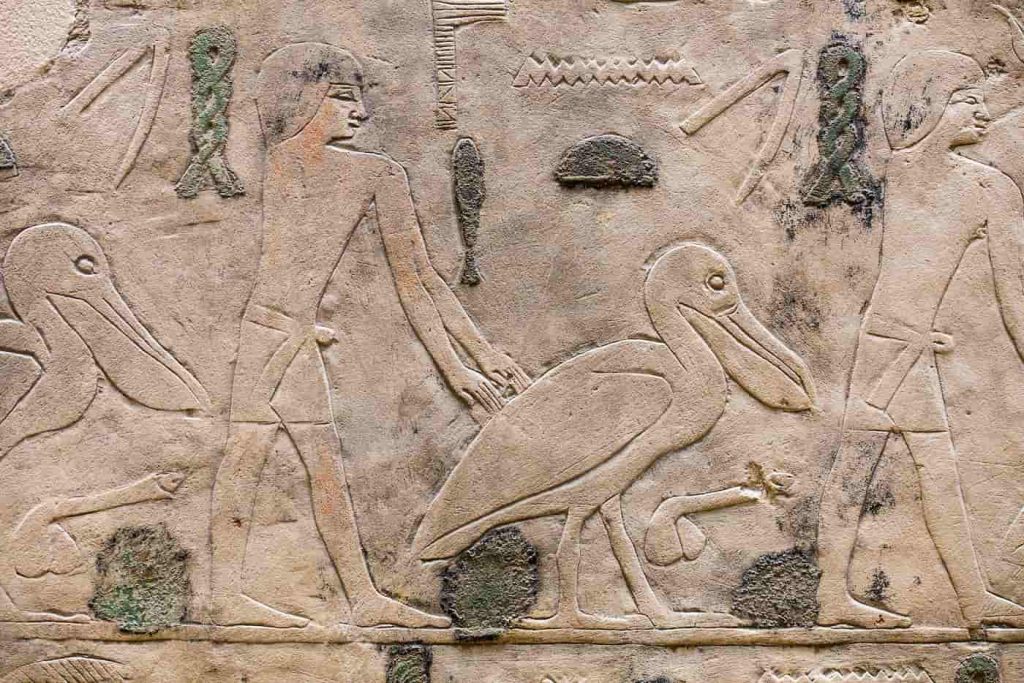
Relief blocks from the sun temple of Pharaoh Niuserre
Although there are no buildings that survived in Thebes older than portions of the Karnak temple complex that may date from the Middle Kingdom, the lower part of a statue of Pharaoh Nyuserre of the 5th Dynasty existed in Karnak. Another statue dedicated by the 12th Dynasty king Senusret may have been usurped and reused, since the statue bears a cartouche of Nyuserre on its belt.
Since seven rulers of the 4th to 6th Dynasties appear on the Karnak king list, perhaps at least there was a temple in the Theban area that dated to the Old Kingdom.
2- In The First Intermediate Period
By 2160 BC, a new line of pharaohs (the Ninth and Tenth Dynasties) controlled Lower Egypt and northern parts of Upper Egypt from their capital in Herakleopolis Magna. A rival line (the Eleventh Dynasty), based at Thebes, ruled the remaining part of Upper Egypt.
The Theban rulers were descendants of the prince of Thebes, Intef the Elder. His probable grandson Intef I was the first of the family to claim in life a partial pharaonic titulary, though his power did not extend much further than the general Theban region.
3- During The Middle Kingdom
Finally, Intef III’s son, Mentuhotep II, controlled the Herakleopolitans by force by 2050 BC. He reunited Egypt once again under one ruler, marking the beginning of the period now known as the Middle Kingdom. Mentuhotep II ruled Thebes for 51 years. He built the first mortuary temple at Deir el-Bahri, which served as the inspiration for the later and larger temple built next to it by Hatshepsut in the 18th Dynasty.
After these events, the 11th Dynasty didn’t continue long as less than twenty years had passed between the death of Mentuhotep II and that of Mentuhotep IV, in mysterious conditions.
Thebes continued to progress as a religious center as the local god Amun became increasingly popular in Egypt. The city was roughly 250 hectares. In addition, they found remains of two palatial buildings.
A group of Canaanite people began settling in the eastern Nile Delta at the beginning of the 12th Dynasty. So, the Asiatics established hegemony over the majority of the Delta region.
4-Ancient Thebes During the New Kingdom
Many achievements took place in Thebes during this era. Important kings and queens established many temples and monuments that have become a great heritage to this day.
Ahmose I’s Role
Ahmose I founded a new age for a unified Egypt and its capital, Thebes. The city remained the capital during most of the New Kingdom. It also became the center for a civil service, where there was a greater demand for scribes and the literate as the royal archives began to fill with accounts and reports. They reeducated a few of the Nubians with Egyptian culture to serve as administrators of the colony in the city.
With Egypt stabilized again, religion and religious centers flourished, especially in Thebes. For example, Amenhotep III spent much of his vast wealth from foreign tribute on the temples of Amun. The Theban god Amun became a principal state deity. Thutmose I (reigned 1506–1493 BC) began the first great expansion of the Karnak temple. After this, colossal enlargements of the temple became the norm throughout the New Kingdom.
Queen Hatshepsut’s Role
The economy became developed in Thebes due to Queen Hatshepsut. As she renewed trade networks, primarily the Red Sea trade between Thebes’ Red Sea port of Al-Qusayr, Elat, and the land of Punt. Aside from decorating the temples of Amun, Amenhotep increased construction in Thebes. On the west bank, he built the enormous mortuary temple and the equally massive Malkata palace-city, which fronted a 364-hectare artificial lake. In the same city, he built the Luxor temple and the Avenue of the Sphinxes leading to Karnak.
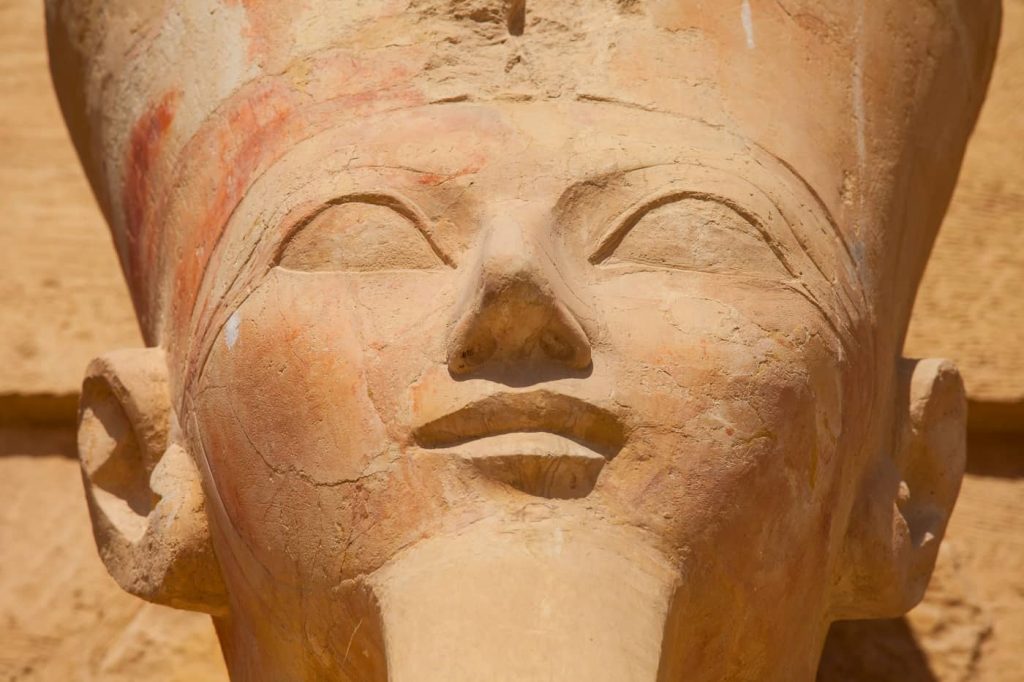
The Mortuary Temple of Hatshepsut
Egypt and Thebes reached an overwhelming state of prosperity that equaled or even surpassed the earlier peak under Amenhotep III during Ramesses’s reign, which lasted for 66 years.
5-Graeco-Roman Period in Thebes
Thebes became part of the Roman province of Thebais during the Roman occupation (30 BC–641 AD). This province is split into Thebais Superior at the city and Thebais Inferior at Ptolemais Hermiou.
A Roman legion was headquartered in the Luxor temple at the time of Roman campaigns in Nubia. Building did not stop, but the city continued to decline. In the first century AD, Strabo described Thebes as a village.
Why is Ancient Thebes famous?
Thebes is one of the most popular tourist destinations in the world, due to its many temples that had an important role in the nature of daily life and religious beliefs prevalent in ancient times. That was through the artistic drawings and intricate engravings on its walls.
The greatest kings of Egypt built most of the famous monuments and tourist attractions in Thebes during the New Kingdom, such as
1- The Valley of the Kings and Queens was the place of many of Egypt’s kings and queens.
2- The Karnak Temple was the largest temple of antiquity. It was built to honor the god Amun, his wife Mut, and their son Khonsu.
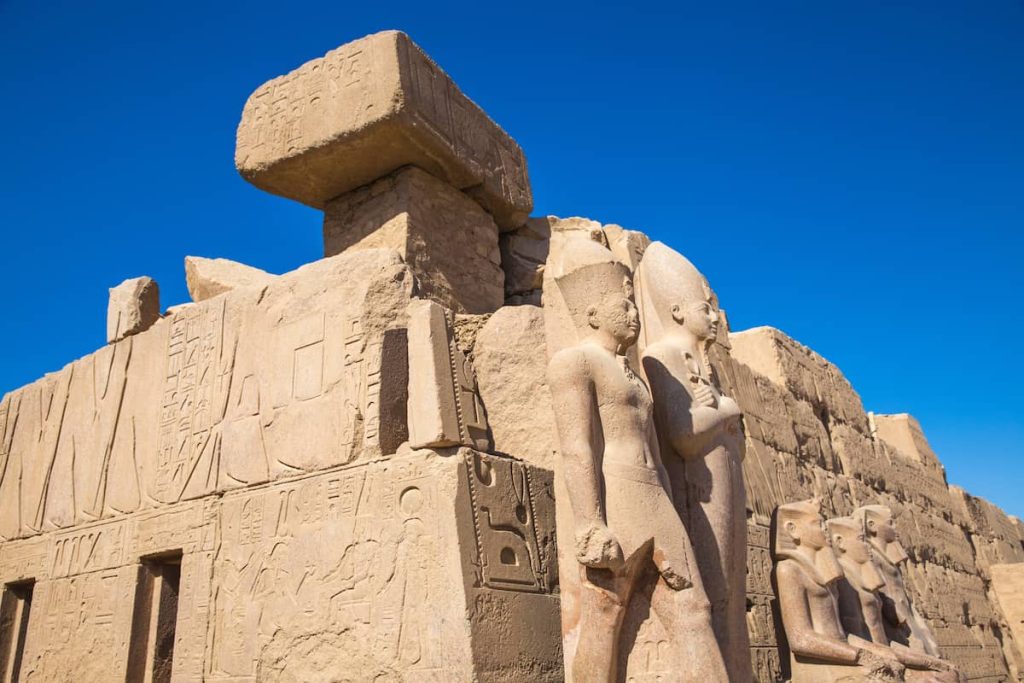
Karnak Temple
3- The Temple of Hatshepsut was one of the funerary temples in Thebes.
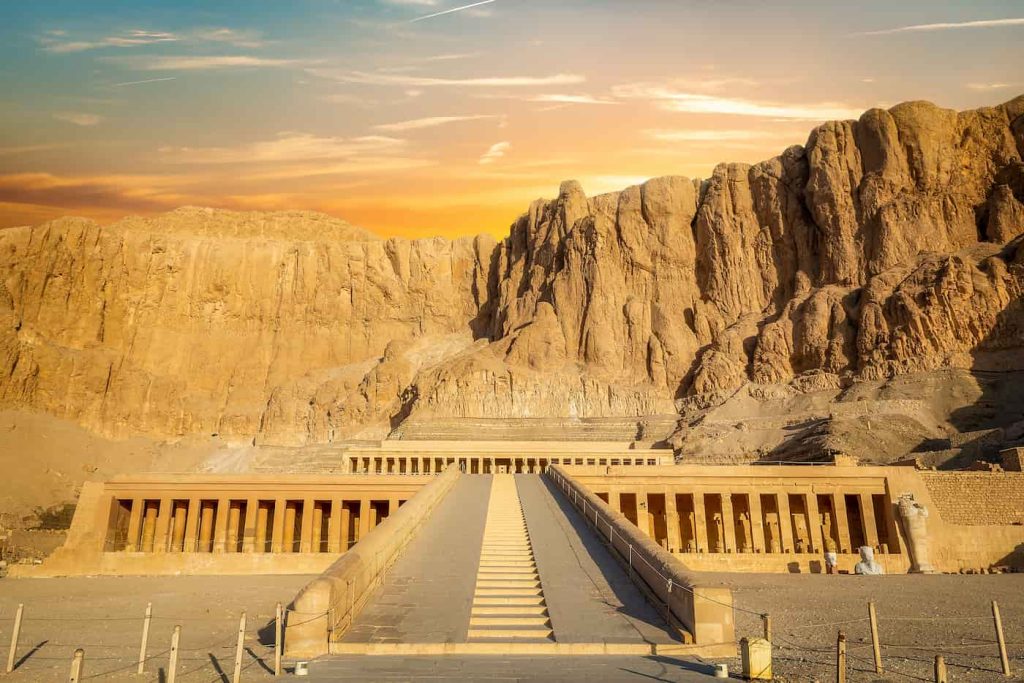
Hatshepsut temple
4- The Colossi of Memnon were as guardians of the city.
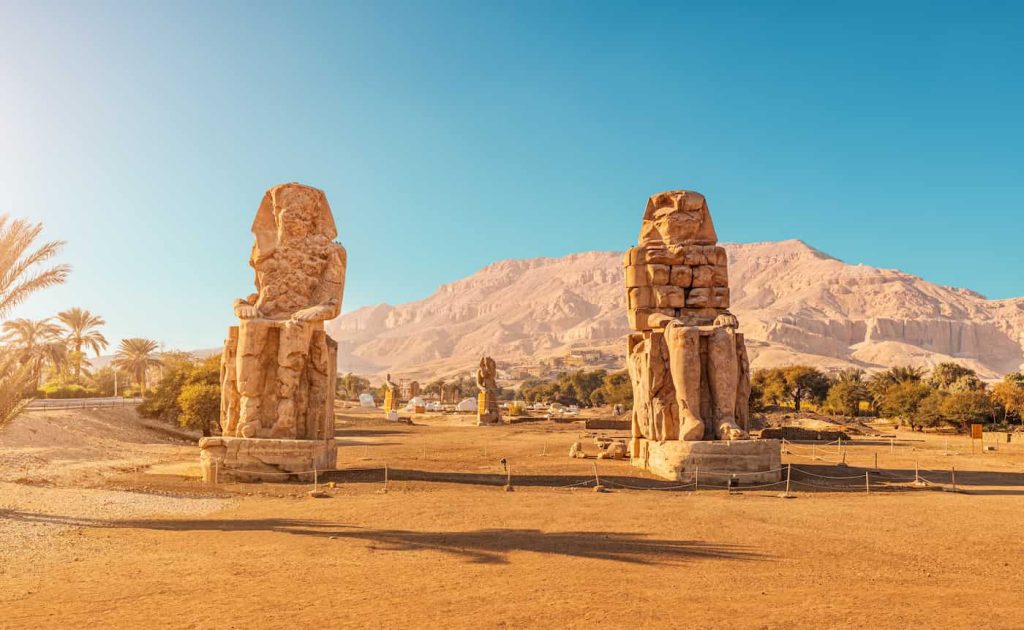
Statues of Colossi of Memnon
5- The funerary temple of Abu Simbel was one of the Pharaonic temples. It was built for the victory of Pharaoh Ramses II in the Battle of Kadesh (1275 BC). This temple was his greatest achievement.
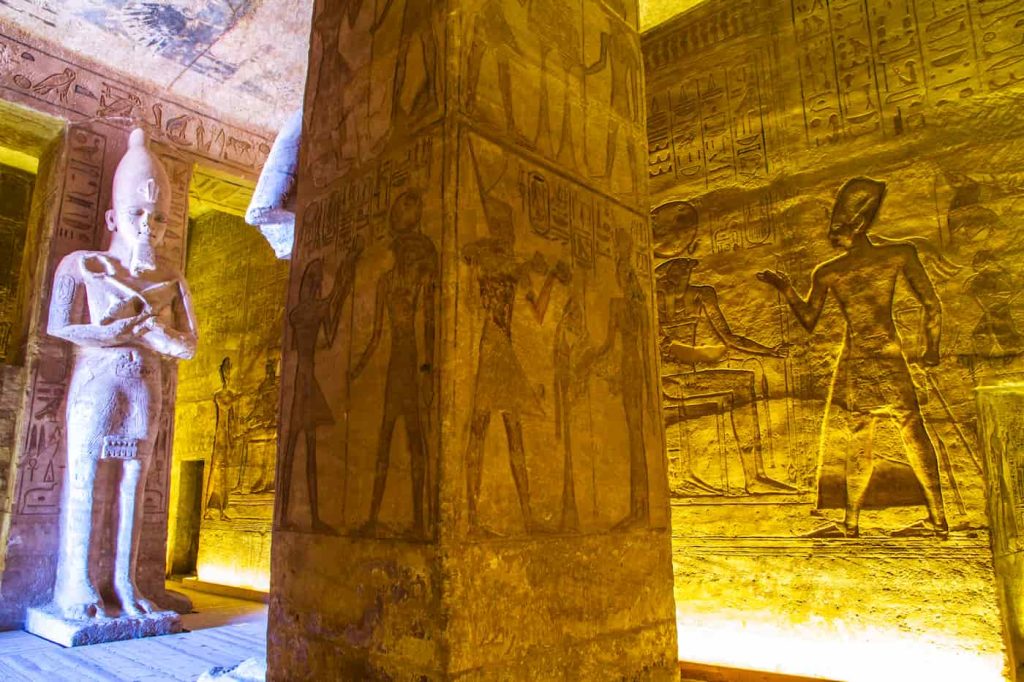
Conclusion
Overall, Thebes was the city of the god Amon. It was the capital of Egypt throughout the Middle and New Kingdoms. Thebes developed the Egyptian civilization with the temples and palaces at Karnak and Luxor, and the necropolises of the Valley of the Kings and the Valley of the Queens.
UNESCO chose Thebes as a World Heritage Site in 1979. The western side of the necropolis serves as a burial ground, which people call the City of the Dead. The necropolis houses royal burial sites together with funerary temples and residential areas for soldiers and priests and workers, and craftsmen who worked for the ancient Egyptian rulers. The eastern bank holds the core section of the city.

